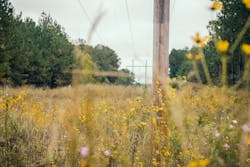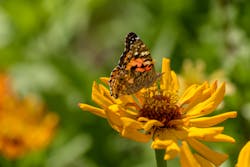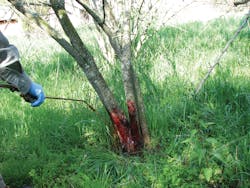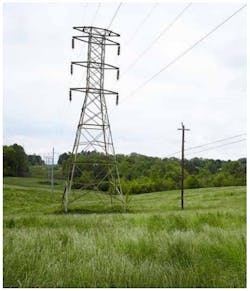Controlling problematic vegetation is an essential practice for utility companies across the country, however, relying on the wrong treatment strategy can lead to inconsistent results for vegetation management programs. For example, the growth of incompatible plant communities in right-of-way (ROW) corridors can lead to accessibility issues, service interruptions, wildfires and the destruction of native wildlife habitat.
Many vegetation managers struggle to keep up with maintenance demands due to budget restrictions and a shortage of skilled workers. With tens of thousands of miles of utility rights-of-way stretching across the country, it can be easy for vegetation managers to settle for a quick solution, but research has shown that some strategies can be more costly than others. For one company headquartered in Oklahoma City, Oklahoma, a progressive approach has resurfaced as its preferred method of control.
Back to the Future
Oklahoma Gas & Electric (OG&E) has provided utility power to customers throughout Oklahoma and western Arkansas since 1902. Each year, the company keeps 5,800 miles of transmission corridors free of threats to utility service and the environment. A key component of this includes controlling incompatible plants, trees and tall-growing brush. These efforts help ensure utility service is safely provided to all customers throughout the company’s 30,000 square-mile service territory. The process requires consistent analysis and often reveals opportunities for improvement to reach its goal of providing safe and reliable power.
Decades ago, OG&E relied on mechanical mowing strategies to keep tree species—like locust, elm, hickory and sweetgum—from interfering with power lines and jeopardizing electrical transmission safety. But a variety of unfortunate events soon revealed the downfalls of this strategy to Oklahoma’s oldest and largest investor-owned electric utility.
One year, when a tornado tore through northern Oklahoma, it took nearly a week to mow access paths large enough for service providers to reach the damaged wires and towers. Examiners also struggled to conduct aerial inspections over thousands of transmission and distribution line miles as the growth of woody brush had made it difficult to see power lines and utility components. In another part of the state, vegetation found growing inside of an OG&E tower had caused corrosive damage. At that point in time, the company knew it was time to rethink its vegetation management strategy.
To fight stubborn woody brush species and aid the development of native plant communities, OG&E began using selective herbicide treatments in the early 1990s. After helping native grasses re-establish at a staggering rate, herbicide treatments soon made up 31% of OG&E’s vegetation management program—with plans to eventually use them nearly exclusively. However, in the years that followed, OG&E slowly reverted back to mechanical mowing as its chief strategy for vegetation control.
As the cost of mowing maintenance increased over time, budget for herbicide treatments was reallocated. Now, more than two decades later, the company is once again looking to increase the efficacy and cost efficiency of its vegetation management program by using an Integrated Vegetation Management (IVM) strategy featuring selective herbicide applications.
Familiar Territory
Mechanical mowing can provide temporary relief from incompatible plants, trees and tall-growing brush, but it also stimulates regrowth. Recent research studies have shown that mowing alone can result in triple the maintenance costs of an IVM-based program. This gap increases as selective herbicides work to eliminate only targeted plants through preemergent, post-emergent and dormant-season applications. Encouraged by the opportunity to do more with less, OG&E is now working to integrate herbicide treatments as a long-term solution for vegetation management.
Selective herbicide applications aren’t just sustainable—they’re scalable. For example, when you compare trimming a tree and having it grow into powerlines in three years to spraying a tree and not having it grow anymore, the results aren’t even comparable.
With thousands of miles of transmission corridors to maintain, vegetation management teams are considering strategies to make the best use of available resources. Budgets will always be tight, and as such, OG&E searches for ways to work as effectively as possible with the dollars it is given.
Environmental Considerations
Using mechanical mowing exclusively to maintain incompatible plant species on utility rights-of-way can cause damage to native plant communities and surrounding wildlife. In comparison, selective herbicides only target incompatible plant species. Many herbicides are practically non-volatile as well, which helps to virtually eliminate the risk of spray drift and off-target control. This provides a significant advantage to OG&E in its fight against one of the region’s most prevalent invasive species.
For example, the utility has a very large problem with johnsongrass, which produces prussic acid that can cause digestive issues for grazing livestock. It can also outcompete native plants and grasses with ease. This is a significant concern for OG&E as it works to protect wildflower species that support pollinator species like native bees, honeybees, and various butterflies. By using herbicides, OG&E can remove johnsongrass without damaging the landscape and wildflowers.
Selective herbicide applications provide an effective and cost-efficient solution for these environmental issues. With herbicides, OG&E can achieve its goals and still have a positive impact on wildlife species like pollinators. While it is saving money from mowing, it is also providing a net benefit to the environment.
Taking the Right Steps
To kickstart its new management strategy, OG&E’s transmission team started using high-volume herbicide applications this past foliar season. Dormant-stem treatments and basal applications will also be used this winter to control incompatible plant species throughout the company’s ROW corridors. This will allow OG&E to enhance electrical transmission reliability and support the development of forbs and natural plants commonly found in native wildlife habitat.
To ensure teams are using the right solutions to achieve these desired results, OG&E has worked with Scott Wright, vegetation management specialist with Corteva Agriscience. Wright’s industry knowledge and educated recommendations have led to the company using products like TerraVue and Vastlan herbicides. He prescribed tank mixes, which provide support to foliar side-trimming applications in the field.
For example, a tank mix of TerraVue and Vastlan supports the company’s long-term objectives and allowed applicators to use a single spray tank for side trim and brush work on the floor. This allows OG&E to complete both applications while staying within specified rate ranges and reduces the need for multiple trips.
OG&E also plans to dramatically increase herbicide applications when the foliar season returns in the spring. Mechanical mowing will still be needed in certain areas, however, even if it is at a significantly reduced rate. The utility will now be on a four-year mowing cycle so it can better use tree crews’ time in areas that can better be managed by herbicides.
For OG&E and other utility companies across the country, an IVM program featuring selective herbicide applications and supplemental mowing can translate to cost savings, enhanced worksite safety and a variety of environmental benefits. Fully committing to an herbicide-based approach can be the linchpin that determines the economic and environmental success of vegetation management programs across the industry.
SHAWN HUFF has worked as supervisor of vegetation management for transmission and facilities with OG&E since January 2019. Equipped with a forestry background and 22 years of experience in the utility industry, Huff oversees the vegetation management program for OG&E, which currently has nearly 860,000 customers.
For More Information
Corteva Agriscience | www.vegetationmgmt.com
About the Author
Shawn Huff
Shawn Huff has worked as supervisor of vegetation management for transmission and facilities with OG&E since January 2019. Equipped with a forestry background and 22 years of experience in the utility industry, Huff oversees the vegetation management program for OG&E, which currently has nearly 860,000 customers.






